Ditapis dengan
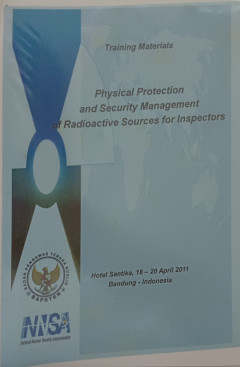
Training Materials Physical Protection And Security Management of Radiactive …
This slide is about Training Materials Physical Protection And Security Management of Radiactive Sources for Inspectors at Hotel Santika, 18-20 April 2011 Bandung Indonesia (AR)
- Edisi
- -
- ISBN/ISSN
- -
- Deskripsi Fisik
- -p.:illus.;31.5cm.
- Judul Seri
- -
- No. Panggil
- 621.039.5 BAP T
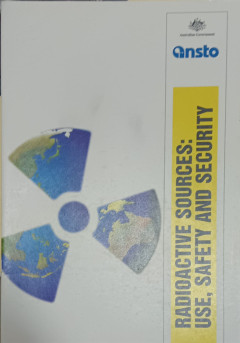
Radioactive sources: Use, Safety and security
Purspose this publication aims to familiarise you with the use, safety and security of radiactive sources. It Describes the types of industries where radiactive sources might be found, and outlines a radioactive source categorisation scheme for safety and security purposes. This information is intended to raise awarness that radioactive sources are utilised widely and must be appropriately secu…
- Edisi
- -
- ISBN/ISSN
- -
- Deskripsi Fisik
- 12p.:illus.;29,5cm.
- Judul Seri
- -
- No. Panggil
- 621.483 ANS R
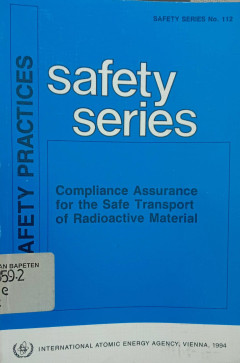
Safety Series No. 112. SAFETY PRACTICES. Compliance Assurance For The Sale Tr…
The 1985 Edition of the IAEA’s Regulations for the Safe Transport of Radioactive Material reinforced the requirement placed on competent authorities to establish compliance assurance programmes that aim at ensuring that the Regulations are met in practice. This book is intended to provide further guidance on developing and implementing compliance assurance programmes to be used by competent a…
- Edisi
- -
- ISBN/ISSN
- -
- Deskripsi Fisik
- -
- Judul Seri
- Safety Series No. 112
- No. Panggil
- 604 IAE S
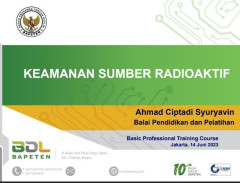
Keamanan Sumber Radioaktif (PPT)
PPT Keamanan Sumber Radioaktif ini berujuan agar peserta memahami ketentuan KSR, mampu menrapkan ke dalam aktivitas pengawasan tenaga nuklir, dan mampu mengevaluasi ketentuan KSR yang berlaku. Isi PPT adalah: Pendahuluan, Dasar hukum referensi internasional, Pembagian kategori sumber radioaktif. Penerapan sistem keamanan sumber radioaktif, Dokumen keamanan sumber radioaktif, Additional: Kea…
- Edisi
- -
- ISBN/ISSN
- -
- Deskripsi Fisik
- 74p.: illus.; pdf.
- Judul Seri
- -
- No. Panggil
- 621.483 KEA A
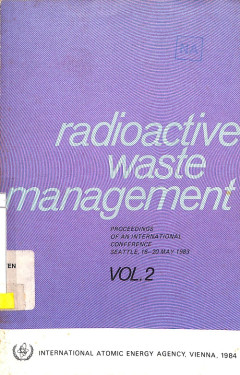
Radioactive Waste Management, Vol. 2: Proceedings of an International Confere…
Proceedings contains material Waste handling, treatment and conditioning at nuclear facilities (Session B.1); Handling, treatment and conditioning of waste from nuclear power plants (Session B.2); andling, Treatment and conditioning of waste from reprocessing plants: National experience (Session B.3); Handling, treatment and conditioning of high level and specific wastes from reprocessing plant…
- Edisi
- -
- ISBN/ISSN
- 9200203841
- Deskripsi Fisik
- 525 p. : Illus. ; 23 cm
- Judul Seri
- Proceedings Series
- No. Panggil
- 363.7289 PRO r v.2
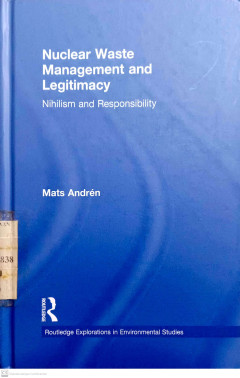
Nuclear Waste Management and Legitimacy: Nihilism and Responsibility
This text focuses on nuclear waste management, which can work in democratic countries only if viewed as legitimate by the population. The book posits the inability of democracies to establish such legitimacy as an explanation for the current absence of public policy decisions that can identify a solution.
- Edisi
- -
- ISBN/ISSN
- 9780415696920
- Deskripsi Fisik
- 110 p. : illus. ; 24 cm
- Judul Seri
- -
- No. Panggil
- 539.7 AND N
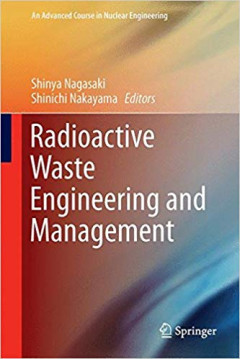
Radioactive Waste Engineering and Management
This book describes essential and effective management for reliably ensuring public safety from radioactive wastes in Japan. This is the first book to cover many aspects of wastes from the nuclear fuel cycle to research and medical use, allowing readers to understand the characterization, treatment and final disposal of generated wastes, performance assessment, institutional systems, and social…
- Edisi
- 2015
- ISBN/ISSN
- 978-4431554165
- Deskripsi Fisik
- XIX,296p;illus;24cm
- Judul Seri
- -
- No. Panggil
- 621.48
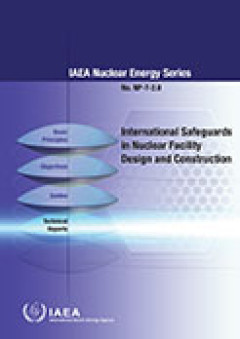
International Safeguards in Nuclear Facility Design and Construction: IAEA Nu…
This IAEA publication provides guidance on the inclusion of safeguards considerations in nuclear facility design and construction. This first volume introduces the basic principles of safeguards by design and discusses the goals, costs and rewards, and places the information into the context of nuclear facility design and construction. Benefits and opportunities for all stakeholders are emphasi…
- Edisi
- -
- ISBN/ISSN
- 978-92-0-140610-1
- Deskripsi Fisik
- 22 p.; 30 cm.
- Judul Seri
- IAEA Nuclear Energy Series
- No. Panggil
- 621.483 IAE i (2)
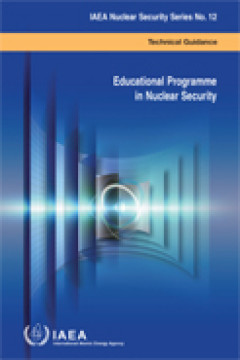
Educational Programme in Nuclear Security | IAEA Nuclear Security Series No. 12
Higher education plays an essential role in nuclear security capacity building. It ensures the availability of experts able to provide the necessary competencies for effective national nuclear security oversight of nuclear and other radioactive material and to establish and maintain an appropriate nuclear regime in a State. This publication presents both the theoretical knowledge and the practi…
- Edisi
- -
- ISBN/ISSN
- 978-92-0-101710-9
- Deskripsi Fisik
- 186 p
- Judul Seri
- -
- No. Panggil
- 621.48 IAE E
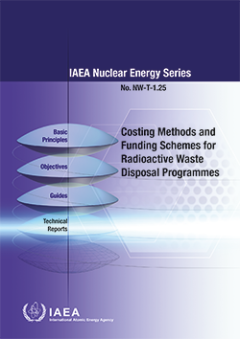
Costing Methods and Funding Schemes for Radioactive Waste Disposal Programmes
Reliable methods for estimating the cost of a radioactive waste disposal programme are crucial to ensure that the necessary funding for completing the disposal programme is available. Estimating the cost for disposal is however a challenging and complex task. Disposal programmes themselves are complex and long-term undertakings and conditions can be expected to change significantly over the tim…
- Edisi
- -
- ISBN/ISSN
- 978-92-0-108819-2
- Deskripsi Fisik
- 90 Hal
- Judul Seri
- -
- No. Panggil
- 621.48335 IAE C
 Karya Umum
Karya Umum  Filsafat
Filsafat  Agama
Agama  Ilmu-ilmu Sosial
Ilmu-ilmu Sosial  Bahasa
Bahasa  Ilmu-ilmu Murni
Ilmu-ilmu Murni  Ilmu-ilmu Terapan
Ilmu-ilmu Terapan  Kesenian, Hiburan, dan Olahraga
Kesenian, Hiburan, dan Olahraga  Kesusastraan
Kesusastraan  Geografi dan Sejarah
Geografi dan Sejarah